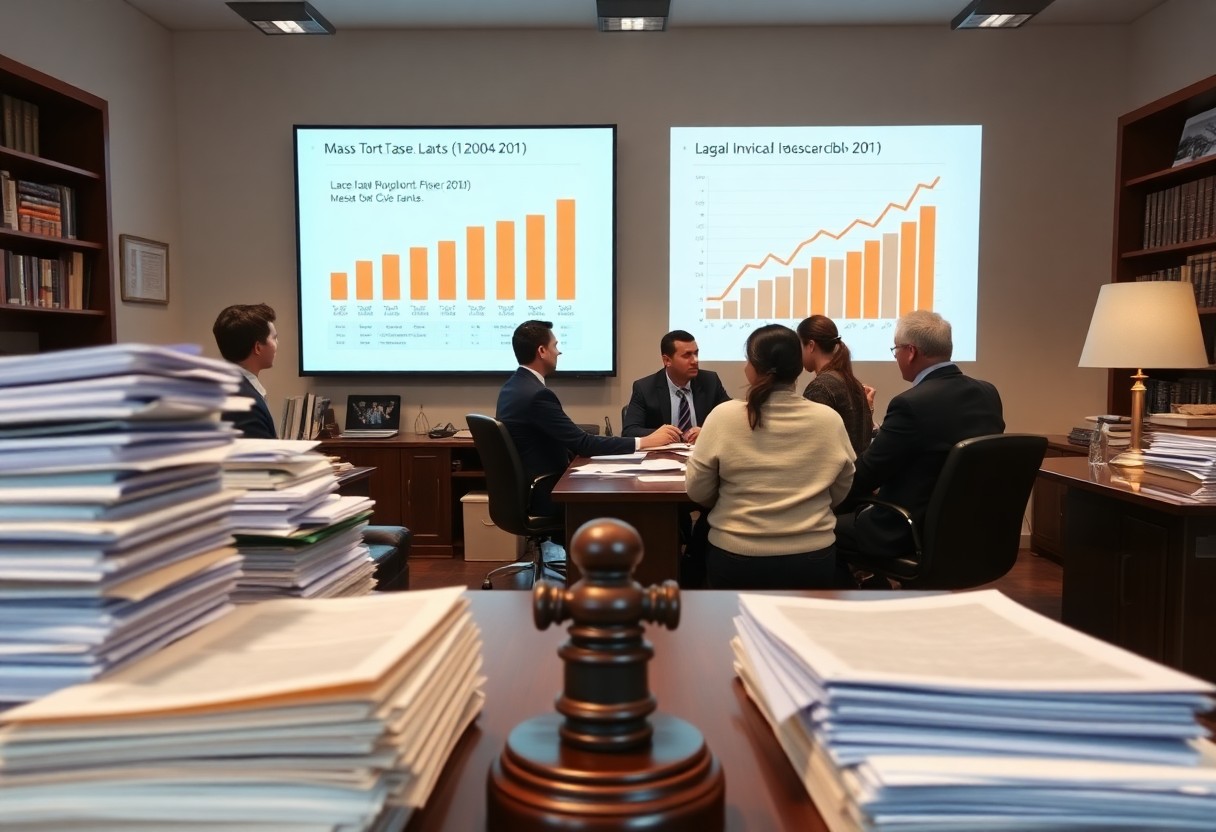Many legal professionals are discovering that social media serves as a powerful tool for mass tort marketing. With billions of users worldwide, platforms like Facebook, Twitter, and Instagram allow you to connect with potential claimants on a deeply personal level, while also providing real-time access to relevant discussions. By leveraging targeted advertising and engaging content, you can enhance your visibility, build trust, and ultimately drive more leads to your practice. In this post, we’ll explore how to maximize your strategy within this dynamic landscape.
Key Takeaways:
- Targeted Reach: Social media platforms offer sophisticated targeting tools that allow marketers to reach specific demographics, making it easier to connect with potential claimants in mass tort cases.
- Engagement Opportunities: The interactive nature of social media encourages engagement, enabling marketers to foster community discussions and gather valuable information from potential plaintiffs.
- Cost-Effective Advertising: Compared to traditional marketing channels, social media advertising provides a lower-cost alternative, maximizing outreach while staying within budget constraints.
The Evolution of Mass Tort Marketing
Your understanding of mass tort marketing has likely changed significantly over the years, adapting to shifts in consumer behavior and technological advancements. Initially dominated by television and print, marketing has evolved into a complex landscape where digital strategies play a vital role, enabling law firms to connect more effectively with potential clients.
Historical Context
Any discussion of mass tort marketing must encompass its historical backdrop, beginning with the traditional advertising methods that prevailed before the internet era. Legal marketing relied heavily on TV commercials, radio spots, and print ads, often lacking the direct engagement that today’s marketers enjoy. This approach, though effective in its time, limited outreach and connection.
The Rise of Social Media Platforms
Social media has dramatically transformed mass tort marketing, providing a platform for real-time engagement and outreach.
Mass tort cases often involve large groups of individuals affected by similar issues, and social media allows for unparalleled interaction among these parties. You can target individuals or communities that may be affected by specific products or situations, leveraging platforms like Facebook, Twitter, and Instagram to disseminate important information swiftly. The potential for virality means shared experiences can quickly reach broad audiences, making you more likely to attract those seeking representation. Moreover, social media’s accessibility allows you to engage with potential clients directly, fostering trust and connection in a way traditional media could never achieve.
Targeting the Right Audience
Some of the most effective mass tort marketing strategies hinge on your ability to identify and connect with the right audience. Social media platforms allow you to segment potential clients based on various factors, ensuring that your marketing efforts reach individuals who are most likely to engage and benefit from your legal services.
Demographics on Social Media
By analyzing user demographics on platforms like Facebook, Instagram, and Twitter, you gain valuable insights into the specific characteristics of your target audience. These insights enable you to tailor your messaging and campaigns to align with the age, gender, and interests of individuals who may be affected by the issues related to your mass tort case.
Tailoring Messages for Engagement
Before launching a marketing campaign, you should craft messages designed to resonate with your target audience on social media. Customizing your content to reflect their concerns and needs can significantly increase engagement and drive them to take action.
Even minor adjustments in your messaging can yield strong results. For instance, using emotional appeal in your posts can make potential clients feel understood, while incorporating information about their rights can spur them to seek your assistance. Ensure that your content is compelling and clear, guiding users towards understanding the benefits of joining your mass tort case. Ultimately, your ability to connect personally will facilitate a stronger relationship with your audience, increasing the likelihood of successful outcomes.
Building Trust and Credibility
Keep in mind that trust and credibility are necessary factors in attracting clients to your mass tort practice. Social media allows you to foster a transparent and relatable presence, where your audience can see your genuine commitment to their cases. By consistently sharing valuable content, engaging directly with potential clients, and showcasing your expertise, you can enhance your authority and establish a trustworthy reputation that resonates with those in need of your services.
Social Proof and Testimonials
Between client testimonials, case results, and positive reviews shared on social media, the influence of social proof cannot be underestimated. When potential clients see satisfied individuals endorse your services, it reinforces their confidence in your ability to deliver results. Highlighting real stories and successful outcomes can effectively encourage others to reach out, paving the way for new client relationships.
Influencer Collaborations
Any marketing strategy can benefit from collaborating with influencers, especially in the legal sector. Influencers can introduce your practice to their following, lending your services credibility and expanding your reach. Their endorsement can create a strong connection with your audience, making them more likely to consider your services when faced with mass tort issues.
Indeed, working with the right influencers can be a transformative approach for your mass tort marketing efforts. By partnering with influencers who align with your practice’s values, you can highlight the importance of your services, reaching a broader audience while enhancing your brand credibility. Influencers who have experienced or are knowledgeable about specific legal matters can share their stories, thereby providing authentic endorsements that resonate with potential clients. This collaboration not only increases awareness but can also lead to a heightened perception of your expertise in handling mass tort cases, making your law firm a trusted choice for those in need.
Creating Compelling Content
Many businesses fail to recognize that creating compelling content is the cornerstone of effective mass tort marketing on social media. Your content should not only inform but also engage and resonate with your audience’s emotions. By crafting narratives around your legal services, experiences, and client stories, you can foster a stronger connection with potential clients, creating trust and prompting action. Always keep your audience’s needs and preferences in mind to ensure that your content is relevant and persuasive.
Visual Storytelling Techniques
After identifying the value of compelling content, employing visual storytelling techniques can significantly enhance your message. Use images, infographics, and tailored graphics that reflect your law firm’s brand and the seriousness of the cases you handle. These visuals should complement your narratives, making complex themes easier to digest while still maintaining the gravity of the situations. Engaging visuals can create a lasting impression that helps your audience understand your message more effectively.
Utilizing Video and Live Streams
By leveraging video and live streams, you can further elevate your social media strategy in mass tort marketing. These tools allow you to showcase your expertise, explain intricate legal concepts, and put a human face to your practice. They create a more dynamic interaction with your audience, enabling them to see you as a relatable and approachable professional.
Video content is particularly effective in capturing attention and conveying information instantaneously. You can deliver critical updates, share success stories, and address common client concerns, positioning yourself as a trustworthy source. Moreover, live streams foster real-time engagement, allowing you to answer questions directly from your audience. This immediacy not only enhances your brand’s authority but also builds a sense of community among potential clients who may seek representation for similar issues. Your ability to communicate transparently and passionately through video can greatly influence prospective clients’ decisions, solidifying their trust in your legal capabilities.
Measuring Success in Social Media Campaigns
After implementing your social media marketing strategy for mass torts, it’s imperative to analyze and measure its effectiveness. Evaluating key metrics will provide you with a clearer picture of engagement levels, audience reach, and overall impact. By understanding these results, you can refine your approach to better connect with potential clients and maximize your campaign’s success.
Key Performance Indicators (KPIs)
Behind every successful campaign are Key Performance Indicators (KPIs) that provide insights into your marketing effectiveness. You might track various metrics, such as engagement rates, click-through rates, and conversion rates. These indicators help you assess which elements of your campaign resonate most with your audience and guide necessary adjustments for enhanced performance.
Tools for Analytics and Reporting
KPIs represent a fundamental aspect of your social media strategy, but they only tell part of the story. You’ll need effective tools for analytics and reporting to gather, analyze, and visualize your data effectively. Various platforms, like Google Analytics and social media insights, can provide comprehensive reports on user behavior, engagement statistics, and audience demographics. These powerful insights enable you to make data-driven decisions, ensuring your marketing strategy evolves based on concrete evidence rather than assumptions.
Indeed, leveraging analytics tools like Hootsuite, Sprout Social, or Buffer, can transform your understanding of social media performance. You can dive deep into engagement metrics, track the effectiveness of specific posts, and monitor the sentiment of your audience. By using these insights, you can optimize your content strategy to effectively target your audience and enhance your outreach efforts, leading to a more robust and impactful marketing result.
Challenges and Ethical Considerations
All marketing strategies, including those leveraging social media for mass tort cases, come with their own set of challenges and ethical dilemmas. As you navigate this digital landscape, you must balance the need to reach potential clients with the importance of maintaining ethical standards and protecting sensitive information. Understanding how to effectively communicate your message while adhering to legal and ethical guidelines is vital for success in this arena.
Navigating Privacy Concerns
Beside the potential benefits, you must also be aware of privacy concerns that stem from social media marketing. Respecting the privacy of individuals while engaging with your audience is key to building trust and maintaining your reputation. It is important to implement transparent practices and ensure that any data collected complies with privacy regulations.
Adhering to Legal Advertising Regulations
Against the backdrop of social media’s expansive reach lies a complex web of legal advertising regulations that you must navigate carefully. These laws often vary by state and dictate how you can communicate with potential clients while promoting your services. Violating these regulations can lead to severe consequences, including legal backlash and loss of credibility.
Concerns about what you can and cannot say in your advertisements are paramount. Many states have strict rules regarding false or misleading statements, so you should ensure that your content is both transparent and truthful. Additionally, familiarize yourself with the requirements for disclosing fees and ensuring that your ads are not overly sensationalized. Adherence to legal advertising regulations will not only protect your firm from potential fines but also foster trust with the clients you aim to serve.
Final Words
Following this, it becomes clear that social media offers unparalleled opportunities for mass tort marketing. By effectively leveraging platforms with vast user bases, you can increase engagement and target specific demographics, ensuring your message reaches the right audience. With the ability to share compelling content and foster community connections, social media enables you to build trust and drive awareness for legal issues that impact many. Embracing these digital strategies can significantly enhance your marketing efforts and ultimately lead to higher case enrollments.
FAQ
Q: Why is social media an effective platform for mass tort marketing?
A: Social media offers unparalleled reach and engagement, making it an imperative tool for mass tort marketing. With billions of active users across various platforms, attorneys can connect with potential clients who may not be aware of their legal rights regarding specific mass tort cases. The ability to share informative content, updates, and testimonials enhances visibility and encourages community discussions. Furthermore, targeted advertising allows for precise audience segmentation, ensuring that the message reaches individuals who are likely affected by particular issues related to mass torts.
Q: How can social media enhance client engagement in mass tort cases?
A: Social media provides a dynamic environment for client engagement, enabling law firms to interact directly with potential clients. Through regular posts, live Q&A sessions, and community groups, firms can foster a sense of trust and connection. This accessibility allows individuals to ask questions and share their experiences in real time, creating an open dialogue. Additionally, sharing success stories and case outcomes can motivate others to come forward, further expanding the client base in mass tort scenarios. Consistent engagement not only builds relationships but also keeps clients informed and invested in their cases.
Q: What are the benefits of using targeted advertising on social media for mass tort cases?
A: Targeted advertising on social media enables law firms to reach specific demographics that are most relevant to their mass tort cases. By tailoring ads based on factors such as location, interests, and past behaviors, attorneys can efficiently allocate resources and maximize the impact of their marketing campaigns. This level of precision increases the likelihood of connecting with individuals who have been affected by similar issues, thereby enhancing lead generation. Moreover, targeted ads can drive traffic to informative landing pages or websites, allowing potential clients to gain valuable insights and take action directly from their social media feeds.
















